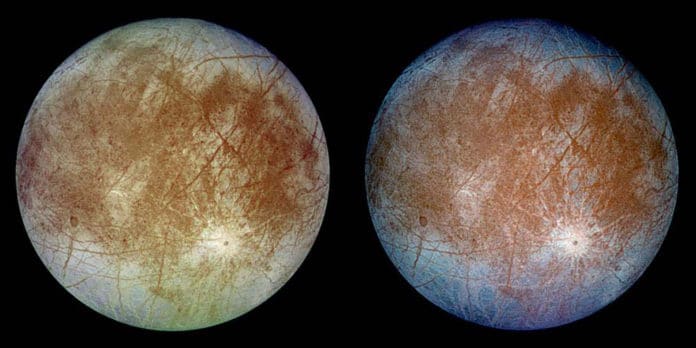The icy moons of Jupiter and Saturn, such as Europa, Ganymede, and Titan, are prime prospects for supporting extraterrestrial life in our solar system. These ice-encrusted moons are predicted to have massive liquid oceans many dozen times the size of Earth’s oceans.
Scientists from the University of Washington and the University of California, Berkeley, have conducted experiments that measured the physical limits for the existence of liquid water in icy extraterrestrial worlds. They ran experiments to search for extraterrestrial life and the upcoming robotic exploration of oceans on moons of other planets.
Co-corresponding author Baptiste Journaux, an acting assistant professor of Earth and space sciences at the UW, said, “The more a liquid is stable, the more promising it is for habitability. Our results show that the cold, salty, high-pressure liquids found in the deep ocean of other planets’ moons can remain liquid to a much cooler temperature than they would at lower pressures. This extends the range of possible habitats on icy moons and will allow us to pinpoint where we should look for biosignatures or signs of life.”
“We know that water supports life, but the major part of the oceans on these moons are likely below zero degrees Celsius and at pressures higher than anything experienced on Earth. We needed to know how cold an ocean can get before entirely freezing, including its deepest abyss.”
Scientists mainly focused on eutectics or the lowest temperature that a salty solution can remain liquid before entirely freezing. They used a simple, high-throughput, isochoric freezing method to measure the pressure dependences of five binary aqueous eutectics. Later, they used a UC Berkeley equipment originally designed for the future cryopreservation of organs to create simulations of the conditions thought to exist on other planets’ moons.
They created and tested solutions of five different salts at pressures up to 3,000 times atmospheric pressure or 300 megapascals.
Co-corresponding author Matthew Powell-Palm, who did the work as a postdoctoral researcher at UC Berkeley, said, “Knowing the lowest temperature possible for salty water to remain a liquid at high pressures is integral to understanding how extraterrestrial life could exist and thrive in the deep oceans of these icy ocean worlds.”
“The new data obtained from this study may help further researchers’ understanding of the complex geological processes observed in these icy ocean worlds.”
Journal Reference:
- Brooke Chang et al. On the pressure dependence of salty aqueous eutectics. Cell Reports Physical Science. April 12, 2022. DOI: 10.1016/j.xcrp.2022.100856
